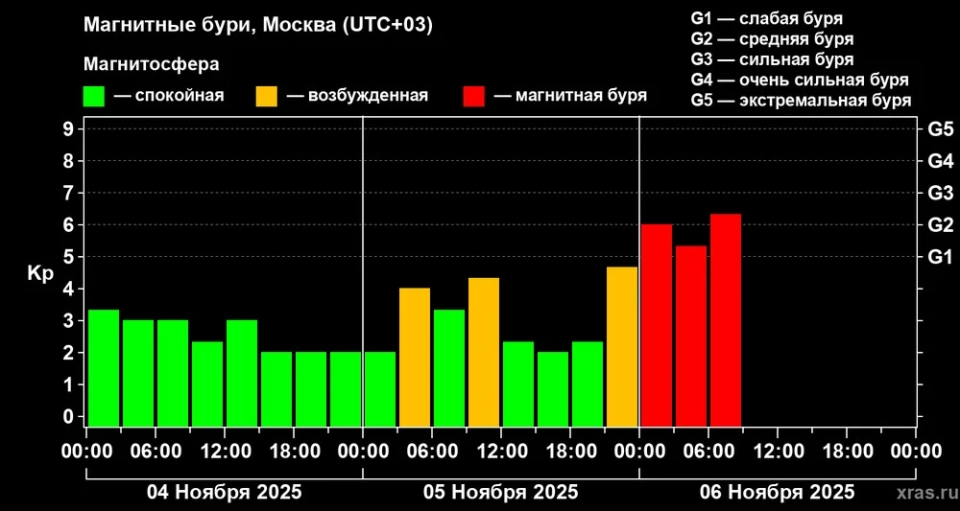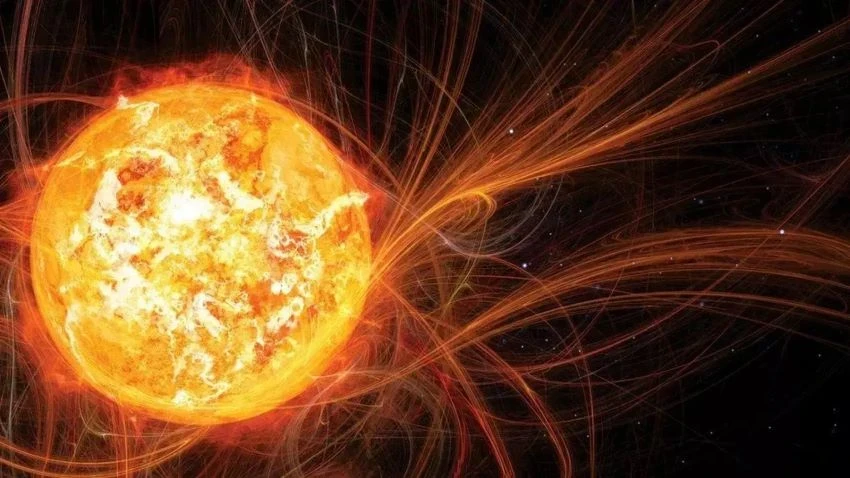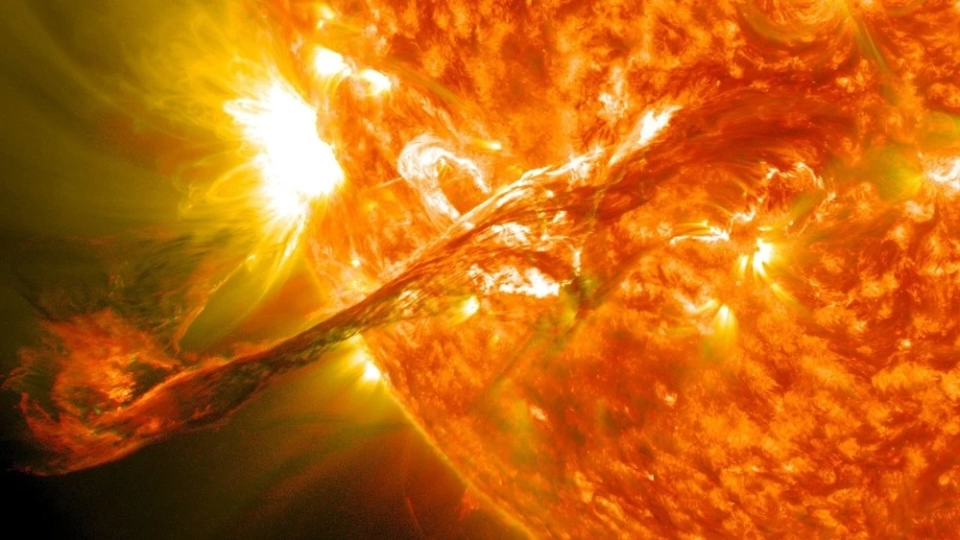
According to astronomers, the cause of the storms at levels G2 and G3 was plasma ejections...
On the night of November 5 to 6, intense magnetic storms began on Earth, reaching levels of G2-G3....

On Wednesday, magnetic storms may occur on the planet, including minor geomagnetic disturbances...

A powerful magnetic storm has begun on the planet, reaching a level of G3 on the five-point scale....
A class M5.0 flare was registered on the Sun — this event became the most powerful since the end of...

Illustrative photo According to the Solar Astronomy Laboratory of the IKI RAN, an M3.5 class flare...
The weather in Kyrgyzstan on November 5. According to the data from Kyrgyzhydromet, rain and snow...
Bishkek November 5, Wednesday At night, the temperature will be -1...-3 °C, with rain expected to...
On November 4, an event was recorded on the Sun as an X1.8 class flare. This information was...
Bishkek November 7, Friday At night, the temperature will be -5...-7 °C, no precipitation is...
Bishkek November 2, Sunday At night, the temperature will be from +1 to +3 °C, with overcast...
Today, the fourth magnetic storm of October has been registered on Earth, which is likely to be the...
In the coming days, dry weather without precipitation is expected in Bishkek. [b]November...
Bishkek October 31, Friday The temperature at night will be +4...+6 °C, no precipitation expected....
Bishkek November 6, Thursday The temperature at night will be -4...-6 °C, cloudy weather is...
According to the meteorologists' forecast, no precipitation is expected in Bishkek....
Bishkek November 1, Saturday At night, the temperature will be +4...+6 °C, rain is expected....
Bishkek October 29, Wednesday At night, the temperature will be +8...+10 °C, rain is expected....
Bishkek October 28, Tuesday The temperature at night will be +7...+9 °C, overcast is expected....
Meteorologists have shared information about the weather conditions expected in Bishkek at the...
On November 4-5, a sharp deterioration in weather conditions is expected in Kyrgyzstan, as warned...
Kyrgyzhydromet has published the weather forecast for Kyrgyzstan from November 5 to November 11,...
Bishkek November 3, Monday At night, temperatures are expected to be +2...+4 °C, with clear skies...

Kulumbaev Esen Bolotovich (1962), Doctor of Physical and Mathematical Sciences (2000) Kyrgyz. Born...
According to the resource "Weather and Climate," the coldest November 2 in Bishkek was in...
Bishkek November 1, Saturday Night temperatures will be +4...+6 °C, rain is possible....
Bishkek October 30, Thursday The temperature at night will be +5...+7 °C, rain is expected....
Bishkek November 4, Tuesday Nighttime temperature +1...+3 °C, rain expected....
Weather forecast for various regions of Kyrgyzstan from October 23 to November 4. According to data...
Precipitation is forecasted in Kyrgyzstan, which may turn into snow. In the capital, Bishkek, the...
Bishkek October 27, Monday The temperature at night will be +11...+13 °C, rain is expected. During...

From Monday to Wednesday (November 3-5), rain is expected across the country, with snow in the...
Precipitation is not forecasted in the territory of Kyrgyzstan on this day. In the capital,...
Rain is forecasted in Kyrgyzstan, which will later turn into snow. In Bishkek, the temperature will...
Weather forecast for Kyrgyzstan on November 1. According to information from Kyrgyzhydromet, on the...
Light rains may touch the Chuy region. In the capital, Bishkek, nighttime temperatures are expected...
Weather forecast for Kyrgyzstan on November 8. According to information from Kyrgyzhydromet, no...

Urussov Ruslan Mukhtarovich (1955), Doctor of Physical and Mathematical Sciences (2002) Karachay....
During the night and early morning of November 6-7, frost may be observed in the valleys of Osh,...
In the Issyk-Kul region, rain is expected, which may turn into snow. At night in Bishkek, the...

Forecasters report that today, October 31, Bishkek is experiencing warm and clear weather with...

Uzhydromet has published the climate forecast for November. According to the data, the average air...

The dance studio “Wake Up Dance Studio”, with the support of the Bishkek city administration, the...